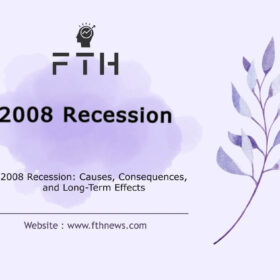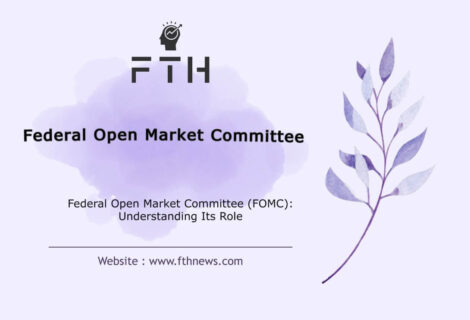
Black Monday 1987: What Is It, Causes, Lessons
Black Monday 1987 On October 19, the financial world witnessed a seismic event etched forever as Black Monday. The Dow Jones Industrial Average (DJIA) plummeted by 22%, sending shockwaves globally and sparking a widespread decline. This article delves into the factors that precipitated Black Monday, examines its aftermath, and distills invaluable lessons resonating in today’s volatile markets.
Black Monday, marked by unprecedented stock market freefall, is a stark reminder of inherent vulnerabilities within the financial ecosystem. The 22% drop in the DJIA not only marked a significant downturn but ignited a domino effect across major exchanges worldwide. In exploring the causes behind this historic plunge, we unravel economic, geopolitical, and systemic factors that converged on that fateful day.
Beyond retrospective analysis, this article seeks enduring lessons pertinent for contemporary markets. Navigating today’s financial landscape requires understanding the catalysts and consequences of Black Monday, offering insights into risk management, market dynamics, and the imperative need for regulatory safeguards. The echoes of Black Monday serve as a cautionary tale, urging vigilance and proactive measures from investors, policymakers, and market participants against evolving global economic forces.
Join us on a journey through financial history as we dissect the anatomy of Black Monday, unraveling the threads that led to its occurrence, and gaining wisdom that transcends time, shaping our approach to the unpredictable nature of financial markets.
What is Black Monday 1987
Black Monday 1987 refers to a historic event that took place on October 19, 1987, in the global financial markets. On this day, stock markets experienced a severe and sudden crash, with the Dow Jones Industrial Average (DJIA) plummeting by almost 22%, marking one of the largest single-day percentage losses in stock market history.
The causes of Black Monday 1987 are multifaceted and include factors such as rapid economic growth, ballooning stock prices, rising interest rates, the depreciation of the US dollar, deficits, program trading, and portfolio insurance. The crash had widespread effects on financial markets worldwide, and it triggered a global stock market decline.
Despite the magnitude of the crash, the markets eventually recovered, and Black Monday serves as a historical reference point for the importance of timely interventions and protective measures in mitigating the impact of financial crises. The event also led to changes in regulations, such as the introduction of circuit breakers, to prevent extreme volatility and panic-selling in the future.
Causes of Black Monday:
Rapid Economic Growth:
The buoyant market atmosphere during the period of robust economic growth (1981-1989) under President Ronald Reagan set the stage for an excessively optimistic sentiment. The era witnessed an unprecedented surge in economic activities, creating an illusion of invincibility within the financial markets.
Ballooning Stock Prices:
The euphoria of a prolonged bull market from 1985 to 1987 propelled stock prices to unprecedented heights, forming an economic bubble on the brink of bursting. Investors, riding the wave of optimism, were unaware of the precarious imbalance between stock valuations and underlying economic fundamentals.
Rapidly Rising Interest Rates:
The abrupt escalation of both short and long-term interest rates, coupled with concerns over inflation and a potential economic slowdown, triggered a seismic shift in investor sentiment. The sudden change in the cost of capital had a cascading effect on various sectors, contributing to the mounting apprehensions in the financial markets.
Depreciation of the Dollar:
The drastic depreciation of the US dollar against major currencies, notably the German Mark, sent shockwaves through financial markets. Exchange rate wars and a weakening dollar fueled fears of accelerating inflation, prompting a flight from the dollar and dollar-linked assets.
Increase in Current Account Deficit and Budget Deficit:
The simultaneous growth of both the current account deficit and budget deficit added to the prevailing unease. The perception that macroeconomic indicators were deteriorating exacerbated concerns among investors, contributing to the fragility of the financial landscape.
Program Trading:
The introduction of novel financial techniques, such as “Program trading,” marked a paradigm shift in stock trading. Computer programs executed sell orders automatically, amplifying the intensity of the sales wave. This digital approach, not well-understood by market participants at the time, played a pivotal role in the rapid and uncontrollable decline of stock prices on Black Monday.
Portfolio Insurance:
Investors sought to mitigate risks in their stock portfolios by engaging in high-risk investment products, including stock index futures contracts. This attempt at hedging, ironically, intensified the market decline as the selling pressure escalated, amplifying the severity of Black Monday’s impact.
Insufficient Information Flow:
In an era devoid of internet access, constant financial channels, and smartphones, the lack of quick and effective information dissemination exacerbated panic. Investors struggled to obtain timely information, intensifying uncertainty and contributing to the rapid spread of fear throughout the markets.
No Circuit Breaker:
The absence of mechanisms like “circuit breakers” allowed the market to plunge into an uncontrolled freefall. Without the ability to temporarily halt trading during rapid declines, the downward spiral accelerated, magnifying the scale of the crisis.
Domino Effect:
The nearly 50% drop in the Hong Kong stock market on the Friday preceding Black Monday acted as a catalyst for a global domino effect. The shockwaves from Hong Kong reverberated through European and US markets, creating a cascading effect that exacerbated the severity of the crisis. The interconnected ness of global markets became painfully evident, underscoring the vulnerability of the financial system to international events.
Aftermath of Black Monday:
A Swift Recovery Fueled by Federal Reserve Intervention
In a striking departure from the prolonged recovery witnessed after the 1929 crisis, the markets rebounded within a remarkably brief span following Black Monday. This swift resurgence owed much of its success to the decisive and timely measures taken by the Federal Reserve.
As chaos ensued on October 19, 1987, Federal Reserve Chairman Alan Greenspan emerged as a key player in averting a potential financial catastrophe. In a display of swift action, on the very day of the crash, Greenspan orchestrated a reduction in interest rates. This move, combined with his efforts to persuade banks to inject liquidity into the system, played a pivotal role in preventing a looming liquidity shortage.
The reduction of interest rates, from 9.25% to 8.75%, and Greenspan’s adept handling of the situation instilled confidence both in investors and banking institutions. By acting decisively and ensuring the availability of liquidity, the Federal Reserve effectively quelled fears and brought a semblance of stability to the tumultuous markets.
The impact of this intervention was profound. Instead of enduring a protracted recession, as witnessed after the 1929 crisis, the markets recovered with remarkable resilience. Within less than two years, the Dow Jones Industrial Average and other major indices managed to claw back their losses.
The Federal Reserve’s role during and after Black Monday showcased the significance of proactive and agile regulatory measures in navigating turbulent financial waters. Greenspan’s leadership underscored the pivotal role that central banks can play in mitigating the fallout from a market crisis, leaving a lasting legacy and valuable lessons for future financial stewardship.
Lessons from Black Monday for Today’s Investors
Protective Mechanisms: Safeguarding Against Panic
In the wake of Black Monday’s tumultuous aftermath, regulatory bodies, particularly the Securities and Exchange Commission (SEC), recognized the need for proactive measures to shield markets from uncontrollable selling pressures. Consequently, the SEC introduced protective mechanisms, including trading curbs and circuit breakers. These safeguards serve as vital tools to curtail excessive market volatility and prevent panic-selling during turbulent times.
The implementation of trading curbs allows for a temporary pause in trading if specific predetermined thresholds are breached. Similarly, circuit breakers automatically halt trading across markets to provide a cooling-off period, allowing investors to regain composure and preventing rapid, unchecked declines. These protective mechanisms stand testament to the proactive measures taken by regulators to maintain market stability in the face of potential crises.
Preventive Steps: Empowering Investors Through Preparedness
Learning from the events of Black Monday, investors today are encouraged to adopt a proactive stance by taking pre-emptive measures to navigate potential market downturns. Heightened awareness, strategic diversification of portfolios, and a thorough understanding of risk management strategies are paramount in preparing for unforeseen market shocks.
Investors can also draw from the experiences of Black Monday to emphasize the importance of staying informed and vigilant in monitoring economic indicators, geopolitical events, and market trends. By staying abreast of relevant information, investors can make informed decisions and potentially mitigate the impact of sudden market downturns.
In the dynamic landscape of today’s financial markets, these lessons from Black Monday underscore the need for a resilient and proactive approach. Armed with protective mechanisms and a commitment to preparedness, both regulatory bodies and investors can contribute to the ongoing stability and sustainability of global financial markets.
Other Black Mondays:
The term “Black Monday” has etched itself into the annals of financial history, resonating with significant market downturns that have shaped economies and left lasting impressions on global finance.
1. Black Monday, October 28, 1929: The Prelude to the Great Depression
The crash of the stock markets in 1929, often referred to as Black Monday, served as the ominous prelude to the Great Depression of the 1930s. With long-term economic ramifications, the fall of 1929 remains the most destructive stock market crash to date, ushering in a period of unparalleled economic hardship.
2. Black Monday, September 29, 2008: The Great Recession Unfolds
In the wake of the US housing bubble burst, Black Monday on September 29, 2008, set the stage for the unfolding of the Great Recession in the late 2000s and early 2010s. The collapse of financial institutions and the ensuing global economic downturn underscored the interconnectedness of modern financial markets.
3. Black Monday, March 9, 2020: Pandemic Fallout and Oil Price War
March 9, 2020, marked the worst day for the US stock market since the Great Depression. Fueled by the dual impact of the emerging coronavirus pandemic and an oil price war, this day saw the most significant one-day drop since the 2008 financial crisis. However, as events unfolded, a more profound record was set just one week later.
4. Black Monday, March 16, 2020: Peak of Pandemic Impact
Concerns about the economic fallout from the escalating coronavirus pandemic reached their zenith on March 16, 2020. The US market witnessed an even greater one-day drop than the preceding week, marking the peak of the initial shock of the virus’s impact on financial markets. This day serves as a stark reminder of the unprecedented challenges posed by the global health crisis.
These instances of Black Monday, each with its distinctive catalysts and consequences, underscore the cyclical nature of financial markets and the resilience required to weather economic storms. As we examine these historical events, we gain insights that are instrumental in understanding and navigating the uncertainties that continue to shape our financial landscape.
Will Black Monday happen again?
Predicting specific future events, including the occurrence of another “Black Monday,” is inherently challenging. Financial markets are influenced by a myriad of factors, including economic conditions, geopolitical events, market sentiment, and unforeseen catalysts. While historical patterns and lessons can provide insights, the dynamics of global markets are complex and constantly evolving.
It’s essential to recognize that markets have experienced significant downturns and crises throughout history, and they may continue to face challenges in the future. The occurrence of events like Black Monday is influenced by a combination of factors, and market participants, policymakers, and regulatory bodies work to implement measures to prevent and mitigate the impact of extreme market events.
Investors should remain vigilant, stay informed about economic indicators and global events, and employ prudent risk management strategies. Diversification of investment portfolios and a long-term perspective can help mitigate the impact of market volatility.
While the possibility of future market downturns cannot be ruled out, it is important to approach such scenarios with a balanced and informed perspective. Market conditions can change rapidly, and investors should adapt their strategies based on evolving circumstances.
Conclusion
Black Monday, with its harrowing plunge and subsequent recovery, stands as a pivotal chapter in financial history—a stark reminder of the unpredictable nature of markets. The events of October 19, 1987, echo through time, leaving an enduring impact that shapes our approach to financial stewardship.
The swiftness of Black Monday’s recovery underscores the significance of timely interventions and the fortification of protective measures. The ability to adapt, learn, and implement regulatory safeguards has become paramount in maintaining the stability of modern financial markets. From the hallowed halls of policymaking to the individual decisions of investors, the lessons drawn from Black Monday continue to influence the way we navigate the intricacies of the global economy.
As we traverse the complexities of today’s financial landscape, the comprehension of the causes and consequences of Black Monday remains an invaluable compass. It guides investors in crafting resilient portfolios and empowers policymakers to institute measures that can mitigate the impact of unforeseen market disruptions.
FAQ
Rapid economic growth, ballooning stock prices, rising interest rates, depreciation of the dollar, deficits, program trading, and portfolio insurance fueled the 1987 Black Monday crash.
Black Monday in 1929 marked the stock market crash that preceded the Great Depression, causing significant economic turmoil and long-term consequences.
Black Monday refers to significant stock market crashes in the US, such as the ones in 1929 and 1987, leading to substantial economic downturns.
The term “Black Monday” doesn’t refer to a specific date but has been used to describe major stock market crashes, notably in 1929 and 1987.
“Black Monday” signifies a major stock market crash, often leading to severe economic consequences and financial downturns.
The term “Black Monday” doesn’t specifically refer to Mondays; it denotes significant market crashes, and the name reflects the dark economic consequences that follow.














